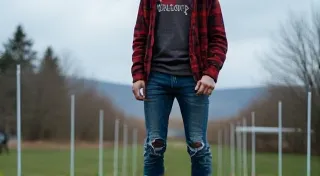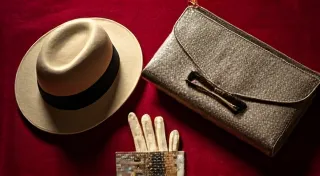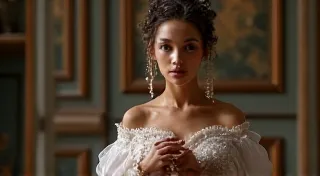The Rise of Grunge: A 1990s Fashion Phenomenon
The 1990s. A decade defined by technological advancements, political shifts, and, of course, a unique and influential fashion movement: grunge. Emerging from the Pacific Northwest music scene, grunge wasn't just a sound; it was a complete rejection of mainstream culture and a powerful statement reflected in the way people dressed. This article explores the roots of grunge fashion, its key elements, and its enduring legacy in vintage fashion today.
From Seattle's Underground to Global Style
Grunge’s origins are inextricably linked to the burgeoning Seattle music scene of the late 1980s and early 1990s. Bands like Nirvana, Pearl Jam, Soundgarden, and Alice in Chains captured the angst and disillusionment of a generation, and their audiences wanted to emulate their raw, unpolished aesthetic. Forget the glitz and glamour of the 80s—grunge embraced comfort, practicality, and a deliberately dishevelled look.
Defining Elements of Grunge Fashion
So, what exactly *was* grunge fashion? It was a reaction against the polished, preppy styles popular in the previous decade. Here are some defining elements:
- Flannel Shirts: The quintessential grunge staple. Often oversized and layered over t-shirts.
- Ripped Jeans: The more distressed, the better. These weren't pristine designer jeans; they were workwear, often thrifted or intentionally damaged.
- Oversized T-Shirts: Band tees, plain tees, anything worn loose and comfortable.
- Combat Boots & Doc Martens: Practical and edgy footwear that completed the look.
- Cardigans: Often oversized and worn with ripped jeans and t-shirts.
- Baby Doll Dresses: Unexpectedly, a feminine touch was often incorporated with simple, often floral or patterned baby doll dresses paired with chunky boots.
- Dark, Neutral Colors: While pops of color occasionally appeared, the overall palette was dominated by blacks, grays, browns, and olive greens.
The Influence of Music and Anti-Establishment Attitude
Grunge fashion wasn't just about aesthetics; it was a visual representation of an anti-establishment attitude. It was a rejection of consumerism and a statement of individuality. The music itself – raw, honest, and often dealing with themes of alienation and disillusionment – solidified the movement’s impact. The style felt authentic because it *was* authentic – it wasn't manufactured by marketing teams, but evolved organically from the musicians and their fans.
Grunge's Enduring Legacy in Vintage Fashion
While the peak of grunge fashion may have passed, its influence continues to resonate in contemporary style and remains a vital piece of vintage fashion history. Today, many are revisiting this era, appreciating the effortless cool and the sustainable nature of thrifting and repurposing clothing. The core principles of comfort, individuality, and a disregard for trends remain relevant.
Thrifting and vintage shopping are key to achieving the authentic grunge look, making it a naturally sustainable choice for fashion enthusiasts. The spirit of rebellion and individuality that defined the 90s still inspires those seeking a style that’s both unique and meaningful.





